

















Ko te taha o tōku papa
Ko Putauaki te maunga
Ko Rangitaiki te awa
Ko Ngāti Awa te iwi
Ko Mātaatua te waka
Ko te taha o tōku mama

Ko Tarawera te maunga
Ko Te Awa O Te Atua te awa
Ko Ngāti Rangitihi te iwi
Ko Te Arawa te waka
Ko Aaria Te Waiarangi
Hunia ahau
I’ve spent all of 2024 both hearing and writing about all the ways Māori have been and continue to be fucked over in this country, and I just can’t take it anymore.
The issues we face are all I ever see and talk about, and I can’t help but continue to discuss them. They’re so prevalent in our day-to-day lives, and to not acknowledge it would be a disservice to not only myself, but the people and culture I love.
But I’m so, so sick of it all. I’m sick of fearing what it means to be Māori in the present day. I’m sick of the implications and threats that come with my identity nowadays, of facing employment and housing crises that never seem to end. I’m sick of feeling threatened by a justice system that I am somehow meant to trust, and betrayed by a government that should exist to protect me.
So, fuck it and fuck that. I’m not talking about the bad stuff, not for now at least.

We’re Māori, for fucks sake, when did we start taking this shit so easily? We, who have always been proud, fierce and stubborn. When did we of all people decide to fear the future and what it may hold, when we should be celebrating those of us who carve a path through it.
I have never known a single Māori who cowed their head and stood back when things seemed tough, because that's simply not how we operate. There is always a reason to fight for what we want to protect.
Then when the fight is over, we sing and celebrate and move on to protecting our future.
That is my culture. And if I have to fight this year with my bare hands to protect it even a little, then so be it.
Arohanui, Aaria and Keelin.

A BIG THANK YOU TO OUR TRANSLATOR, TE AMOHANGA RANGIHAU CONTRIBUTORS
GUEST EDITED BY AARIA HUNIA
ART AND PHOTOGRAPHY BY KEELIN BELL
MICAH GEIRINGER (HE/HIM) NGĀTI KAHUNGUNU KI WAIROA
TE ARAHORI GRACE DAY (SHE/HER) NGĀTI TŪWHARETOA, NGĀTI TŪRANGITUKUA
MARIAMA HUNIA (SHE/THEY) NGĀTI AWA, NGĀTI RANGITIHI
AROHA MILLAR (SHE/HER) NGĀTI RANGITIHI, NGĀTI NGAHERE

16TH SEPTEMBER 2024
ISSUE TWENTY
MASSIVE MAGAZINE
After watching her father reign as the Māori King for 18 years, Ngā Wai hono i te pō was appointed as the new Māori Queen on September 5th.
That same day, Kiingi Tūheitia was laid to rest alongside his mother Dame Te Atairangikaahu and previous Māori kings on the sacred Taupiri Mountain.
Massive Te Ao Māori editor Aaria Hunia celebrates with a heavy heart and gives condolences to the anointed Queen Ngā Wai hono i te pō.
She felt shameful that she did not recognise all that Kiingi Tūheitia did to carve a future for Māori in his reign.
However, since his passing Hunia learned that the king fought for Māori every day of his reign.
“I know that his daughter will carry on his legacy, and the legacy of all that came before us.”
Ngā Wai hono i te pō is the eighth Māori monarch in New Zealand, and only the second Māori Queen — the first was her grandmother, Te Arikinui Dame Te Atairangikaahu.
Hunia said, “We should all fight to follow the example her father set, and that I'm sure she will soon prove to lead.”
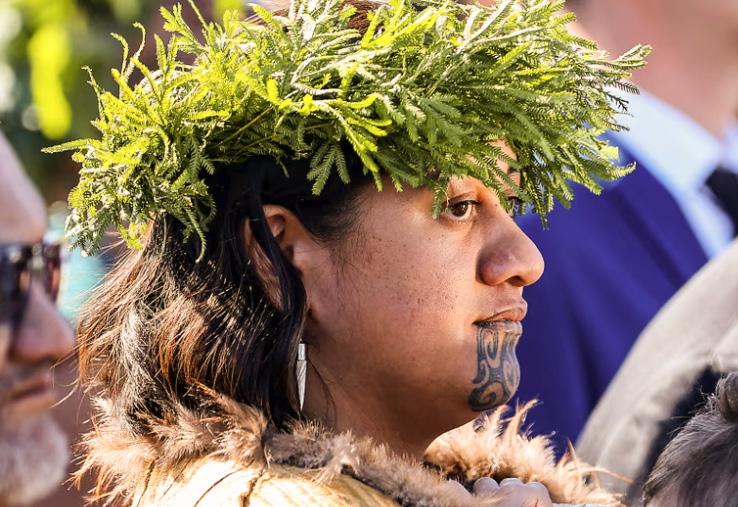
PHOTO / DJ MILLS / GETTY IMAGES

“In this moment, I look to both the past and the future for reasons for Māori to fight.”
Tekau maa-rua (the 12) is the council made up of representatives from iwi across the motu. The council, along with other rangatira and leaders, made the final decision.
The Queen’s focus now turns to how she can continue her father’s call for Māori across the motu to unite.
WORDS BY REBECCA HOGAN A SHE/HER
Multiple sources tell Massive of plans for the Wellington Fine Arts and Photography buildings to be sold or leased next year.
However, the university says there are no current plans, but are deciding how to use space for the College of Creative Arts “refreshed 2025 curriculum”.
As of May, 624 courses faced retirement, and it is unclear whether these cuts will stop.
Film and Photography student, Arlo Macmillan echoed students’ belief saying, “Blocks 2 and 6 are being sold."
“The whole thing is being managed so poorly.”
Regarding suspected property sales he said, “The thing is that students don’t know if they are or aren’t losing it and the staff can’t give them a definite answer because they don’t know.”
While the university decides what to cut down on, the Dominion Building has been undergoing fancy renovations since 2023 for the new Screen Arts Academy.
Max Woolf, co-president of the BSA Film Club, said keeping staff and courses is more important than upgrading buildings, saying this will keep the university’s “foundations strong”.
He sung praises for the upgraded Screen Arts building, however, the fear of course cuts still loomed.
“The thing I’m most scared of is our whole course being cut and us losing everything."
A Massey University spokesperson said there were no current plans to sell Block 2 or Block 6, however, “spaces that are deemed surplus will be assessed to determine their most appropriate future use”.
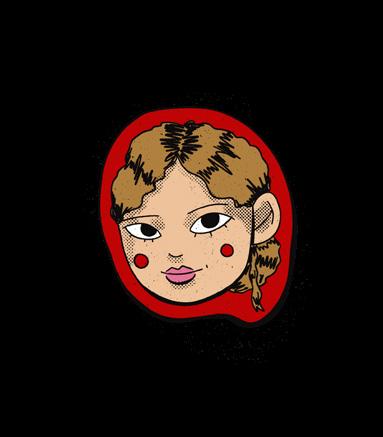

In an interview in March, vice chancellor Jan Thomas confirmed with Massive that she wished to sell or lease 50% of the university’s property.
The Massey spokesperson said the College of Creative Arts is examining spaces and considering how to best allocate space to suit the refreshed 2025 curriculum.
Late last year, the university sent out a proposal request for realty partners to assist in selling and leasing over $150 million worth of property from all three campuses. However, the document did not list 50% of Massey property.
The spokesperson went on to explain that any funding would go into ensuring “our campuses offer modern and fit-for-purpose spaces for … the current and future needs of our people".
Walking around campus recently you’ll find many buildings sitting empty, and if you're lucky you’ll spot a few boxes or stacked chairs.
The old Student Enterprise Room, the Heritage House, the Travel Consultant Room, the Culture and People Block, parts of the Business Studies West building, the HR and Recruitment block all of these spaces appear empty and have been for some time.
This comes as the university makes plans to consolidate space across the three campuses.
The university is looking for ways to cut costs, as last year it lost $45 million and has forecasted a $30 million deficit for this year.
A Massey University spokesperson said they can reduce costs by reducing their “physical footprint over the coming years”.
Since 2023, Massey University has cut 280 staff — the single largest layoff in New Zealand university history.
The university is already sub-leasing buildings to commercial entities for dual use, and may look at doing this more.
They said this may mean moving staff into other buildings, allowing them to sell or lease buildings and land that are not being used.
“The staff who previously occupied Heritage House have relocated to a more central location in the Old Registry building.”
The spokesperson said staff that need to move are told by their manager, and get moving support from the estates team.
However, wider staff are not always notified about other teams' moves.



Ican’t think of a respectable country that appoints their national leader, rather than holding an election. But I guess in the land of Te Tira Ahu Pae, democracy isn’t the priority.
Since 2022, the tripartite of presidents who stand for all Massey University students, have been appointed not elected by the student body.
I reached out to all three current presidents about this issue not one of them responded.
There are currently three presidents: Hennessey Wilson as general President, Westly Peters and Sosefina Filo Masoe as Pasifika co-presidents, and there is currently no Māori president (also known as Mana Whakahaere).
According to the Te Tira Ahu Pae constitution document, the presidents and vice presidents are appointed. The process says appointments will be made prior to student representatives' elections in the second semester. It said the student board will “call for expressions of interest from the student body”.
Thus far, rep nominations have already begun and I have not seen anything from the association upholding its promise to ‘call for expressions of interest’ on new presidents.
One line of the constitution in particular feels like a slap in the face: “The seven Student Representatives will be appointed, and the student body shall be notified”.
Oh, thanks for the notification.

Each president sits on the appointment panel for the next president for that cohort, as well as reps. I appreciate that this brings some student voice to who the next presidents are.
However, thousands of Massey students are left out. This also opens a space for nepotism and bias to creep in.
I also appreciate that students do get to vote for student representatives, to which nominations are now open. But this isn’t enough, we need to vote on who the top dogs are too.
When we have student presidents chosen for these positions, we expect them to be active with us when it comes to issues happening on campus. For Albany, it's been a dead zone with very little events. We’ve also been left out this year when it comes to protesting on the university’s neutrality on the war and Palestine, as well as staff and course cuts.
Being on the Albany campus, I feel isolated from the student presidents. And I know I’m not the only one.
When presidents stand with their students, we don’t feel alone or forgotten when we find out that more degrees will be cut.
Without a chance to have student voices to be heard, it kills any chance for democracy.
Bring back student president elections.
Kapa haka is where I first understood what it meant to be Māori.
Growing up in the mainstream school system there was a level of disconnect from my Māoritanga. Yet throughout school I was able to engage in kapa haka as a way of connecting and understanding the importance of whakapapa and whenua. While I’m not able to speak or fully understand te reo, when I engage in waiata or haka I feel like I understand through the wairua and mauri.
For generations haka and waiata have been used to share whakapapa and whanau history with our tamariki and mokopuna. But now, they’re commonly used as a form of protest, and a way of showing solidarity.
On March 2nd, the Hurricanes Poua team decided for their first game of the season, they would protest the Governments proposed bill to redefine Te Tiriti. They did so by composing a haka calling out karetao o te Kāwana kakiwhero (Puppets of this Redneck Government). During the haka the Poua told viewers, “taku iwi tuohu kore e!” which means “what will always last is our people, we will never fold”.
This display of protest wasn't something people could just ignore, especially politicians. Winston Peters talked about how it was an insult to the Government. Chris Hipkins stated that this is what haka is and everyone is entitled to express their opinion. Chris Bishop said he disagreed with the message but that they were entitled to their view.
At the Poua’s next game a week later, they performed another haka protesting the Government’s ignorance. The dynamic of Māori activism since the signing of Te Tiriti o Waitangi has been characterised by a restless search to recover and reassert that lost mana Māori motuhake (Māori sovereignty).
Poua said in their haka, “Governments are temporary, the Treaty will endure, Poua will endure”. They are recentring Māori, showing that we have the authority to push back. It is a wakeup call to Māori that we need to work together. They set a wero for us in their haka when Poua said, “New Zealand rise up! Here is Hurutearangi”. Hurutearangi is the female atua of the wind, a symbol that the winds are shifting. Many Māori have felt the change in the winds, especially our rangatahi.
On March 14th, David Seymour visited Freyberg High School in Palmerston North as the associate education minister. As Seymour was leaving the students performed Ka Mate, which had been organised by the students to protest Seymour’s Treaty Bill. The students showed their frustration at plans to cut back programmes which ensure students receive free kai.
During the haka, one student allegedly spat at the ground in front of David Seymour's feet, which led the school to consider suspending the students. Social media support came from people all around Aotearoa, as well as a petition stating that these rangatahi were exercising their rights to free speech, and no one was harmed.
These students give me hope, that the next generation of Māori will continue to use haka to fight for their future. Because while every kiwi has no doubt heard the Ka Mate chant before, the Freyberg students' performance ended with a resonance that has never felt more relevant.
“Hūpune! Kaupane! Whiti te rā!”
“One last upward step! Then step forth Into the sun that shines!”


WORDS BY MICAH GEIRINGER A HE/HIM
‘There’s a difference between graduating as a veterinarian who happens to be Māori, and graduating as a Māori veterinarian.’
This is advice I was given near the end of last year, when I was trying to figure out whether I should sign up to Tāwharau Ora’s VetMAP program (Veterinary Māori and Pasifika). And I’m so glad I did.
The lack of Māori representation in Science and Medicine has always been an issue, and there is still clear work to be done. Only 2.6% of veterinarians identified as Māori in 2022 and 2023, according to Te Kaunihera Kata Kararehe o Aotearoa (the New Zealand Veterinary Council) annual report. However, Māori make up 17.8% of the New Zealand population, according to last year’s census.
The competitive nature of the Bachelor of Veterinary Science compounds this low statistic. But for Māori and Pasifika tauira, VetMAP is a program which runs throughout the entirety of vet school, making it especially useful for pre-vet students in the competitive phase.
Nestled away in the vet school building is the VetMAP whare, where there is extra kai and a study space, and where the lovely Pauline works to provide pastoral care. The program provides additional study resources, tutoring, and opportunities to build a sense of community with other Māori and Pasifika tauira.
When I first started pre-vet and joined the VetMAP whānau, I was worried I wasn’t ‘Māori enough’. I’m not fluent in te reo, and I am most definitely white passing. Vet school itself is riddled with imposter syndrome, so this was taken to a different level for me. A few of my friends in VetMAP even felt guilty with the idea that they were ‘taking away spots from indigenous students who deserved it more’.
I asked the first-year Vet students who just went through pre-selection about their experiences with VetMAP. Taylah moved away from home knowing no one in Palmerston North or Massey, but now she has so
many people she calls whānau. She says, “It’s awesome to have the guidance of people who are further along in my degree, and it’s all been possible thanks to VetMAP and the whakawhanaungatanga they facilitate.”
I can relate to Taylah, as moving away to Palmerston North felt utterly isolating as the students surrounding me had completely different paths. It didn’t help that it had been three years since I had been in high school, I didn’t graduate with University Entrance and dropped Science after Year 10. It was never my intention to study anything STEM related. Despite this, VetMAP was quite possibly the best thing about pre-vet for me. Everyone was on a different cultural journey, but we were all experiencing it together.
Vet student Samara fully believes in the value of VetMAP and its kaupapa of holistically supporting students. “I know that the support network of people and the personal growth VetMAP has offered has been paramount to helping me succeed in uni life and in study.”
Dwayne tells me that VetMAP made the pre semester a lot more bearable, “from the available resources, from food to tutors and support of the VetMAP upper years and fellow pre vets, very chur”.
I have to agree with Dwayne, Samara and Taylah, but it's sad to see that there’s still the racist misunderstanding, intentional or not, that providing support for underrepresented groups gives them an unfair advantage. There's also an idea that correcting systemic racism in our universities is done simply by ‘bumping up’ grades or selecting more Māori students. This fails to address the root issue, which is the history of suppressing indigenous knowledge and barring indigenous students from accessing higher education.
It was only in 1972 that Massey opened its Department of Social Anthropology and Māori Studies, and only in 1992 that the university launched its master of Māori studies degree. The introduction of Te Ao Māori into higher education is a movement from our parents’ lifetimes, and the torch has been passed to us to fight for it to flourish.
Supporting Māori success means rethinking how we learn, and supporting indigenous practices, not just lowering our GPA requirements or picking applicants based on ethnicity alone. It means valuing the taonga that is Māori knowledge and valuing its application throughout every space of the university experience.
The support provided by VetMAP encourages and nurtures the development of Māori veterinarians, not just to graduate, but to be pillars of their community and of their whānau. Perhaps VetMAP is even slowly bumping up that 2.6% of Māori veterinarians.
I’m left feeling proud to walk across the graduation stage one day as not just a veterinarian who happens to be Māori, but as a Māori veterinarian.



WORDS BY AROHA MILLAR A SHE/HER NGĀTI RANGITIHI A NGĀTI NGAHERE
KO RUAWAHIA, RAUA KO MAUNGARANGI ŌKU MAUNGA
KO TE AWA O TE ATUA, RAUA KO OTARA ŌKU AWA
KO TE ARAWA, RAUA KO TE WHAKATŌHEA ŌKU IWI
KO MURIWAI RAUA KO RANGITIHI ŌKU TĪPUNA
KO NGĀTI RANGITHI, RAUA KO NGĀTI NGAHERE ŌKU HAPU
KO RANGITIHI, RAUA KO TERERE ŌKU MARAE
KO AROHA WILSON TŌKU KUIA
KO GINA MATCHITT TŌKU MAMA
KO AROHA MATCHITT MILLAR AHAU
TOMORROW
I BRAID MUKA
INTO RATS TAILS FROM THE BASE OF MY SKULL
THINKING ABOUT MY MOTHER AND HER MOTHER
WOULD THEY PULL ME BY THIS MUKA?
My mother is an artist and my nan a weaver, like my great great grandmother before her. My toi Māori practice is about reconnecting with the practices and mātauranga held within my whakapapa. Though the original pathway of connection has been severed through colonisation, I am finding new ways to collect that knowledge.
Christianity as a tool of colonisation has deemed mātauranga, specifically practices and craft associated with wahine, as invaluable. Eventually, the barriers to pass on knowledge grew too high for my tīpuna. My mother was never taught te reo Māori, though her mum spoke fluently. My nan was not taught to weave by her aunties, but instead learned later in life. My great great grandmother, Onewhero Paora, probably learnt raranga from her hapū. But my nan, much like my mother and I, had to seek out teachers external to our whakapapa to learn our customary practices.

LIKE THEY PULLED ON MY COUSIN’S EARS
HŌMAI O TARINGA KIA NGAUA E AU
DOES THE TŪĪ MISS THAT PULL OF KNOWLEDGE TOO?
The mamae of having that line of generational knowledge cut as it is sent from Rangiātea down the heke of your whare, leaves an ache on the top of your head. The whatumanawa opens to receive knowledge, like how the divet in the head of a pou is meant to hold a heke. But if you cannot see your whare, you must wait and open yourself up to the possibility of knowledge coming from another source.
Studying Māori Visual Arts at Massey and fostering a tuakana teina relationship with my lecturer, Karangawai Marsh, allowed me to be taught the practice of skinning and pelting manu. She taught me the process of cutting sinew from skin, including karakia and the burial of anything unused. Karangawai led me to the same process my nan would have used to prep her feathers for weaving.

I wonder if when my nan was learning to weave, she had these big feelings too. If she ever asked herself why she never sat with her aunties and learnt from them. If she cried when she didn’t have the words to articulate the memories that came into focus. Like how the smell of feathers in the garage and scent of stripped harakeke smells like Nannie’s house to me.
I'll never know for sure how she felt because I never asked. I can’t remember her trying to teach me reo Māori after she regretted not teaching her own daughter. Never asked what the right way to make putiputi is or how to start a kete. But while I don’t have the words to describe this feeling, at least now I can practice that same process she once did.
TODAY
MAMA TAUGHT ME
TO MAKE MY FIRST KETE
TIGHTLY WOVEN WITH A FLAT BASE THOUGH AUNTY BUBBLES DID HERS DIFFERENTLY BRAIDED, WE AGREED
I REMEMBER BUBBLES ARGUING WITH MY NAN ABOUT WOVEN PUTIPUTI
SHE SAID YOUR NANA MAKES ROSES, I MAKE PUTIPUTI
NOW I MAKE BOTH AND TEACH MY BROTHER

Hold your breath let cold water rush over you, as the river washes your fears and doubts away with the current.
Stay in this moment of comfort and beginnings, and be blessed by the words of those who hold you close
Do not pay them attention those who screech and cry, and blast their projections at you listen to the river instead.
She sings to you here, harmonising with the voices of your ancestors past saying how proud they are
To see you face each day simply by just being Māori that is reason for celebration, it’s why they call you a taonga.
When you next hear those cries and screams go back to the river and take a deep breath.


TE MAHI MAHIMAHI
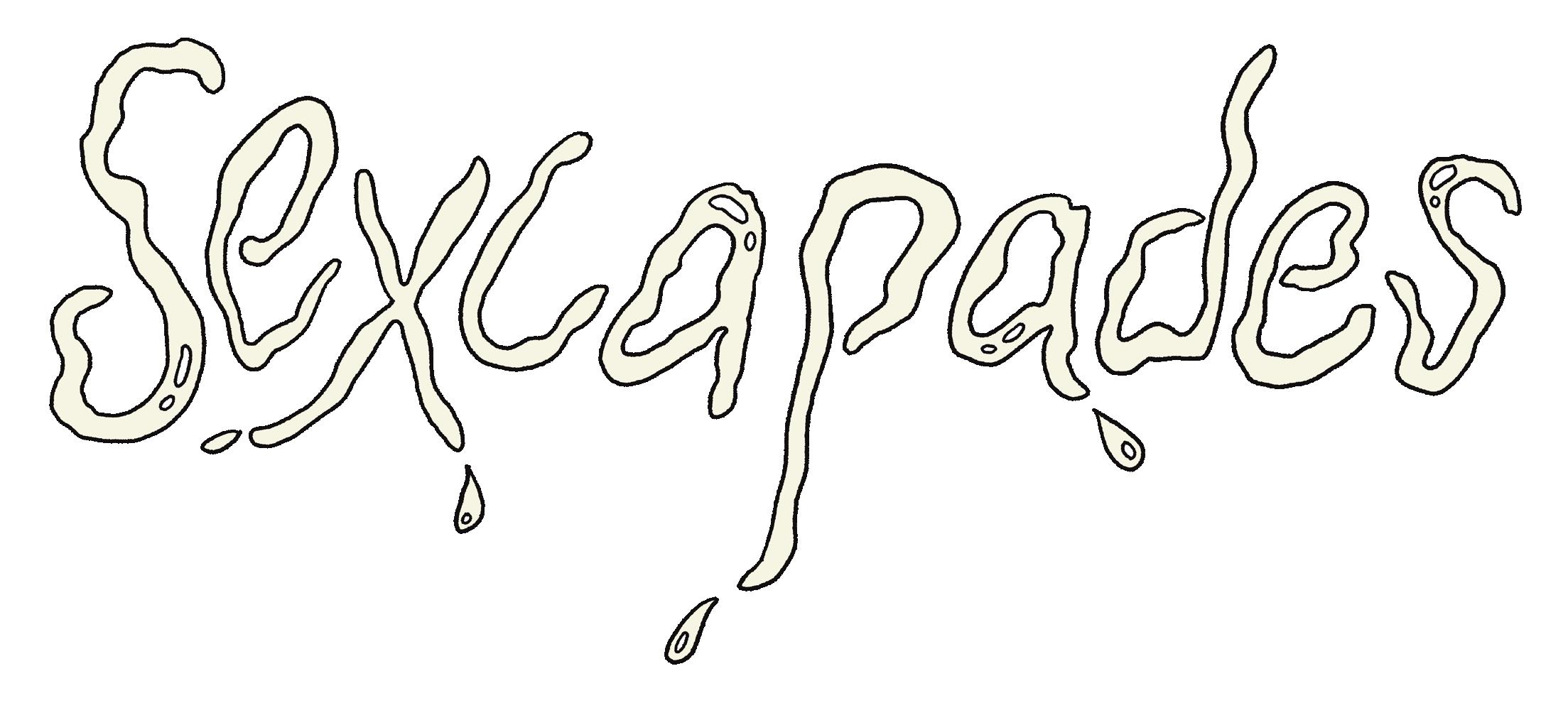
During the break last year, I had a situationship with this cute boy from my hometown. Nothing too special, just a few makeout sessions every now and then and some grinding with our clothes on. But the last time we hung out, I was thinking about asking him out on a proper date and buying a pack of condoms for after.
At least, that was the plan, until this guy finds out my mum's maiden name and iwi.
At first, I thought it’s not a big deal, cause this guy's white as shit and I should be in the clear, right? Well apparently not white enough, because he hits me with the "Just asked my mum... same hapu as yours."
WTF
I get home and I’m gagging while avoiding eye contact with my mum. But he’s STILL texting me asking when we're gonna hang out next. You just found out we’re cousins!
Thank fuck I was heading back to my uni flat in like a week and could ghost that man like it never even happened. Last I heard he was in a new (and hopefully non-incestuous) relationship.
As for me, I'm sticking strictly to international dick from now on.
MASSIVE






BEFORE COLONISATION SWEPT THROUGH AOTEAROA WITH TIMEKEEPING METHODS LIKE THE SEVEN DAYS OF THE WEEK AND THE GREGORIAN CALENDAR, MĀORI HAD THEIR OWN WAYS OF DOCUMENTING TIME. ONE WAY THEY ACHIEVED THIS WAS THROUGH THE LUNAR CYCLE, AND PREDICTING WHAT ACTIVITIES AND ATTITUDES WERE BEST SUITED FOR CERTAIN DAYS.
THE MĀORI LUNAR CALENDAR IS CALLED MARAMATAKA, AND IT IS STILL USED BY MANY IN THE MODERN DAY TO PLAN AND ACT ACCORDING TO THE WHIMS OF THE MOON.
SO, PLAN YOUR WEEK ACCORDING TO THE MARAMATAKA CALENDAR AND THE DIFFERENT PHASES OF THE MOON.

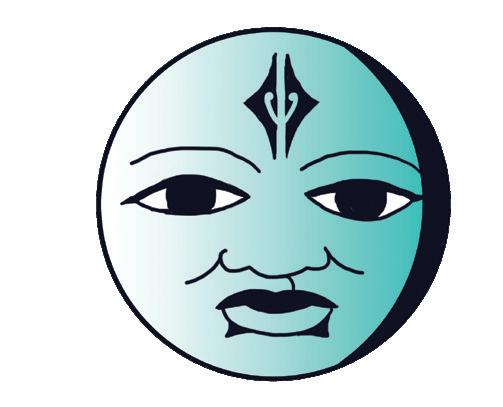

MONDAY 16 SEPTEMBER 3:42 PM - TUESDAY 17 SEPTEMBER 5:02 PM
As Monday afternoon hits, you’ll likely experience a sharp dip in your energy levels. In older times, this dip would’ve been used to step back and prepare seeds and trees for planting. So do exactly that! Prepare for the high energy levels that are soon to come, and complete smaller tasks that ensure you are ready for success.
TUESDAY 17 SEPTEMBER 5:02 PM - WEDNESDAY 18 SEPTEMBER 6:23 PM
Rākaunui, the full moon, is just around the corner as well as the peak of energy levels and productivity that comes with it. You’ll be feeling a sudden surge of motivation for your mahi, and you should capitalise on it quickly to make the most of the next few days.
WEDNESDAY 18 SEPTEMBER 6:23 PM - THURSDAY 19 SEPTEMBER 7:43 PM
With the full moon here it’s time to make the absolute most of what it offers. Smash out as much work or planning as you can in this time. But also consider organising a hangout session with your friends and family and putting that freshly charged social battery to good use.











THURSDAY 19 SEPTEMBER 7:43 PM - FRIDAY 20 SEPTEMBER 9:04 PM
Another day of high energy, though you’ll soon start to feel it withdraw in the coming days. Still, consider making the most of the high tides and going fishing. The fish are guaranteed to be biting these past few days. And if the ocean doesn’t call to you, I’m sure some other new project will.
FRIDAY 20 SEPTEMBER 9:04 PM - SATURDAY 21 SEPTEMBER 10:25 PM
It is time to prepare yourself, your loved ones and your surroundings, as the waning moon will begin to decrease your energy. This is the time to give back to the soil, whether that be literally in the form of weeding your veggie patch or by taking a moment to breathe and take stock during the day.
SATURDAY 21 SEPTEMBER 10:25 PM - SUNDAY 22 SEPTEMBER 11:45 PM
Though this is still a good time to accomplish smaller tasks, such as cleaning up around the house and getting some study prep in, remember to take regular breaks. You’ll soon be entering a period of low energy that will last for a few days, so it’s okay to take things one step at a time as you push through.





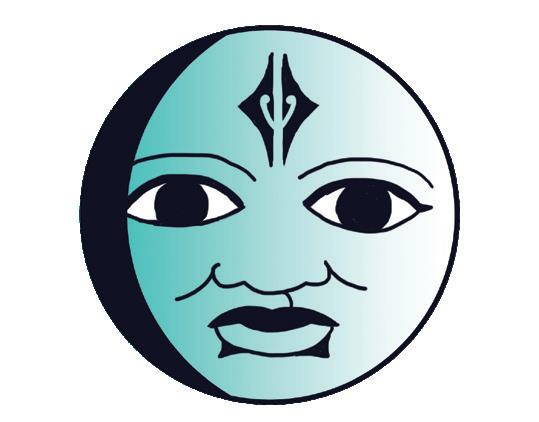




9. What colour is ‘mā’? (5)
15. What does ‘wiki’ mean? (4)
10. NZ author who wrote Cousins (8,5)
11. What did Dame Naida Glavish say when she answered the phone that nearly lost her job in 1975? (3,3)
13. Extinct NZ bird (3)
14. Where was the treaty signed? (8)
16. What kind of bird is a pīwakawaka? (7)
17. Where would you be likely to see a korowai (Māori feather cloak)? (10)
19. 1994 film about the Heke family (4,4,8)
20. First openly transgender mayor and Parliament member (8,5)
1. Kiwi actor and producer who starred in 10,000 BC (5,6)
2. Australian/New Zealand singer, actor, and television personality (4,6)
3. The name of the new Māori Queen (3,3,4,1,2,2)
4. Auckland’s te reo Māori name (6,8)
5. A complex of carved buildings and grounds that belongs to a particular iwi (tribe), hapū (sub-tribe) or whānau (family) (5)
6. Co-leader of the Green Party (6,8)
7. “Wanna see my _______
_______ dance moves?” (7,7)
8. Māori performing arts (4,4)
9. Te Whanganui a Tara is which city? (10)
12. 2002 NZ drama film based on a 1987 novel (5,5)
18. The Māori flag colours are black, white and _______ (3)

